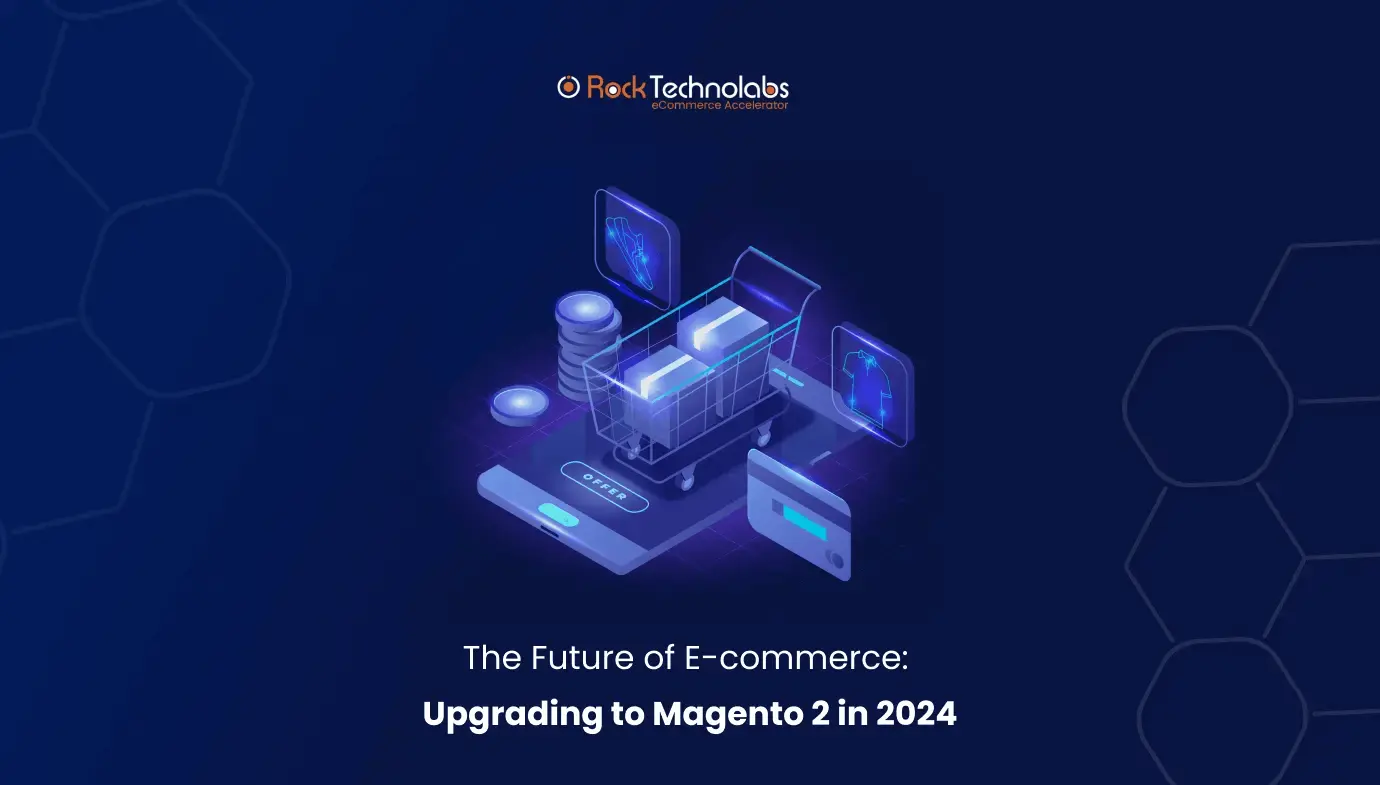The Future of E-commerce: Upgrading to Magento 2 in 2024

The e-commerce store is all about winning the hearts of the customers. As we put the first foot in 2024, you want to continue transforming the user experience and bringing more customers to your store. The first measure every eCommerce store owner should take in 2024 to boost store performance is going after the Magento upgrade service.
Upgrade to Magento 2 is a win-win situation for business owners as it brings lots of benefits to your store, and not ignoring it advances the security standard will lead to more customers visiting the store. There is no doubt that Magento is a reliable and scalable solution that can be used by small and large businesses alike to launch successful online ventures.
Keeping up with the latest eCommerce trends is something Magento strives to do to improve the shopping experience for its customers.
Continue reading the post to get access to some significant reasons to upgrade your Magento in 2024 and give a successful edge to your eCommerce business.
What are the benefits of upgrading to Magento 2?
Consumers who shop online regularly constantly search for the best deals and prefer to shop seamlessly across all channels. If you are currently running your eCommerce business with or working on older technology, it’s time to move to Magento 2 to take your commerce game to the next level.
By upgrading to Magento 2, you can enhance the shopping experience on your website by offering the following key benefits:
- Enhanced performance. Magento 2 has been updated to ensure it is optimized for speed and performance, resulting in even faster loading speeds for your online store as a result.
- An enhanced feature set. With the latest version of Magento 2, you will find an array of new features and functionalities that will allow you to enhance your online store’s overall functionality.
- A simplified user interface. A great benefit of Magento 2 is that it comes with a new and more intuitive user interface that is easier to navigate and use for managing your online store.
- Compatibility in the future. Investing in Magento 2 allows you to be compatible with future Magento versions, receiving continuous support, updates, and all new features that Magento introduces regularly without any hassle.
With its impressive features, Magento 2 stands out from its predecessor, Magento 1, and competing platforms in almost all aspects.
Magento 2: Make a note in the eCommerce industry with impressive functionality
- Managing catalogs. Managing, updating, and creating product catalogs in Magento is easy. It allows merchants to easily add custom product attributes, categories, and tags and manage their products’ images and videos without taking time off their day jobs.
- Managing products. With Magento, you can manage inventory, set pricing rules, promote products, and manage pricing rules. Also, all types of merchants can use Magento to create custom product bundles, configure products, and join products to create custom product groups.
- Managing orders. Magento offers an easy-to-use order management system that allows merchants to manage and track their orders throughout the fulfillment process. This feature enables merchants to create shipping labels, process refunds, and exchange orders from one screen.
- Managing customers. With Magento, shoppers can create accounts, add items to wish lists, and leave reviews. In addition, Magento is also designed to help merchants create and manage customer groups as well as loyalty programs for their customers.
- Processing of payments. Magento supports various payment gateways like PayPal, Stripe, and Amazon Pay. Magento also lets merchants create custom payment methods.
- Managing shipping. With Magento, several shipping options are available, such as flat-rate, free, and carrier-specific shipping. Magento also lets merchants create custom shipping methods.
- Search engine optimization (SEO). Unlike other e-commerce platforms, Magento is SEO-friendly and offers several SEO features, specifically customized meta titles and descriptions, product tags, and image optimizations.
Tips for upgrading to Magento 2
By now, you know why migrating to Magento 2 is a great idea. To make the transition from Magento 1 to Magento 2, here are a few expert tips that you can follow to help with the process
Plan, review, and study
As a first step, you will migrate your website to Magento 2. Leaving behind the old technology and moving to a platform that has greater power and robustness means you are leaving behind the old technology behind you.
You must take time to understand the migration process to rationalize attributes and other data structures. While doing this, you scope out your requirements to ensure that you implement them correctly.
Keep track of your Magento 1 extensions.
If you were using the Magento 1 platform, you might have installed a couple of extensions on the store to help you make your life easier. There is a great need to review all extensions used on Magento 1 websites carefully.
Check the following:
- How many of these Magento 1 extensions are still being used today?
- How long will it take for them to be supported post-migration to Magento 2?
- Lastly, perhaps most importantly, is Magento 2 equipped with your customers’ desired features?
As a result, your website will be freed of many unwanted tools and extensions. By doing so, you will be able to get rid of items you don’t need, which can also boost the speed of your website. An eCommerce website can also be re-platformed to Magento 2 similarly.
Train your tech staff.
Magento 2 is a completely different platform from Magento 1. Having a small technology team is more likely to occur for small business owners. These team members are responsible for managing the backend of your eCommerce business. Therefore, you should ensure your employees are proficient with this new platform.
As a result, it would be great if you could give your technical staff at least two to three weeks to practice this new platform and familiarize themselves with it. You can also reach out to Magento’s trusted community to ask for help.
Upgrading to Magento in 2024: Setting the future of E-commerce
The Magento eCommerce platform is an open-source platform that powers businesses of all sizes worldwide and constantly evolves to meet their ever-changing needs. Magento is well-positioned for continued growth and success in 2024, with powerful features, a flexible architecture, and a large developer community to support its development.
The company is set to transform the e-commerce store in the coming years by integrating AI, machine learning, and augmented reality tools, allowing companies to leverage more powerful and versatile tools. The more Magento expands its commerce capabilities, the more business models and industries it will serve.
Conclusion
With Magento, you can create an eCommerce platform that can satisfy the needs of businesses of all sizes with the power and versatility of a powerful and versatile platform. Furthermore, Magento eCommerce trends are well-positioned to take advantage of the trend of innovation, which has been a key factor in its rise to the top.
Embracing Magento upgrade version trends boosts customer satisfaction, increases sales, and helps merchants stay competitive. Most importantly, Magento eCommerce trends can help merchants keep their online stores profitable for a long time.





